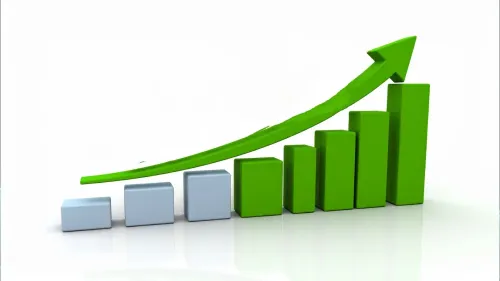US Trade Tariffs: China's Domestic Hurdles Persist Amidst High Uncertainty

Synopsis
Key Takeaways
- China's GDP growth projected at 5% for 2024
- Property sector indicators continue to decline
- Consumer confidence near record lows
- Stimulus measures ramped up to support the economy
- Additional tariffs could lower GDP growth by 0.25%
New Delhi, Feb 27 (NationPress) In light of the new strategies being formulated by nations to tackle the trade tariffs imposed by the US government, China faces persistent domestic challenges, including a sluggish property sector and feeble consumer spending, as highlighted in a report released on Thursday.
China's real GDP growth is projected to be 5 percent in 2024, which is a decline from the 5.4 percent growth in 2023.
According to CareEdge Rating, two significant domestic challenges are affecting the economy: the ongoing difficulties in the property sector and low consumer spending. Key indicators in the property sector, such as 'floor space started' and 'floor space sold,' have continued to decline in 2024.
Investment in real estate assets has also decreased by approximately 11 percent, marking a contraction for the third straight year.
The report notes that consumer confidence in China has remained close to historically low levels, with no recovery observed since the second wave of Covid. The negative impact of the property sector downturn and high youth unemployment has further dampened consumer sentiment.
This has resulted in weak consumer spending, which has negatively affected its contribution to real GDP growth. Weak consumption is also keeping inflationary pressures low, with consumer price inflation averaging only 0.3 percent over the past year and producer prices experiencing declines for more than two years.
In 2024, Chinese policymakers have increased stimulus measures to bolster the economy. However, the effectiveness of these monetary and fiscal actions in significantly reviving growth remains uncertain, as stated in the report.
During the December Politburo meeting, Chinese authorities pledged to maintain a moderately loose monetary policy and a more proactive fiscal policy in 2025. Consequently, additional stimulus measures are anticipated, particularly amidst a potential new trade conflict with the US.
Nevertheless, the report from CareEdge Rating expresses concerns that the current consumer goods trade-in program may not be adequate to stimulate long-term consumption growth. To foster more sustainable consumption-driven growth, China must enhance its employment landscape and reinforce its social safety net.
Our analysis suggests that the additional tariffs could lead to a reduction of approximately 0.25 percentage points in China’s real GDP growth in 2025. As a result, disinflationary pressures may persist into 2025, especially if domestic demand continues to falter. Uncertainty remains significant, making it crucial to monitor the evolution of tariff-related developments.









